Australian Shilling types
The shillings of Edward VII and George V share a common reverse designed by W. H. J. Blakemore who also designed the reverses of the other silver coins of the period.
The series commenced in 1910 with a single year of issue bearing the effigy of Edward VII.
The obverse design was by George W. de Saules.
King Edward VII died on 6th May 1910 and George V assumed the British throne. Australian shillings bearing George V's effigy were minted in London, Birmingham, Melbourne and Sydney during the years 1911 to 1936.
As for the florins, there are no obverse die varieties reported for any of the shillings of that period, suggesting that there was a single master die for the entire George V series.
The obverse design was by Sir Edgar B. Mackennal.
An interesting speculation is whether the shilling dies may have been produced by reducing the florin dies. I have no idea whether that was actually done but it seems more likely that the shilling dies were prepared from a separate reduction punch cut from the same artist's model.
Obverse 1
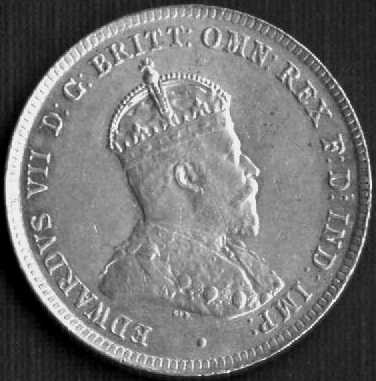
The obverse displays 140 rim denticles.
Obverse 2
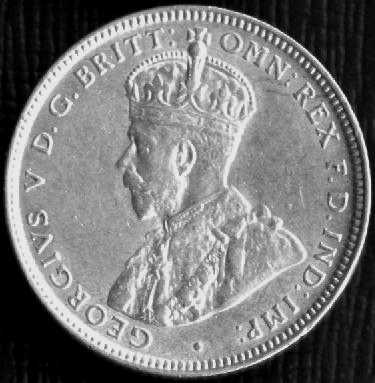
This image shows the obverse typical of all the George V shillings. The designer was Sir Edgar B. Mackennal who also designed the obverse of the other standard series George V silver coins.
This design features 141 rim ticles.
Obverse 3
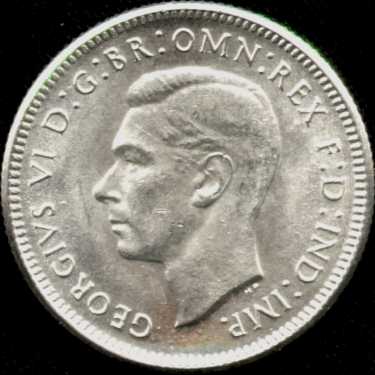
Designed by Thomas (Humphrey) Paget, this is the first of the two George VI obverses and was used on shillings dated 1938 to 1948.
This design features 134 rim denticles.
Obverse 4
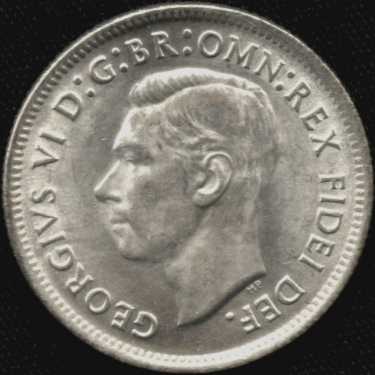
From 1950 until 1952 the second of the George VI obverses omitted IND IMP from the legend because India had become an independent country in 1947.
This design features 135 rim denticles.
Obverse 5
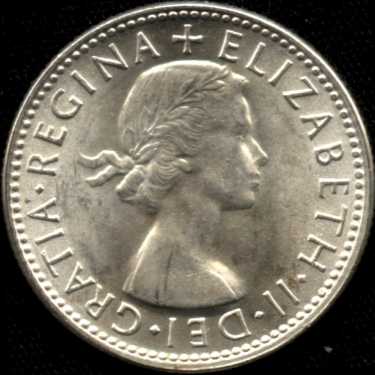
Mary Gillick's portrait of Queen Elizabeth II adorns all the shillings from 1953 onwards but this particular obverse was only used in 1953 and 1954. The rim adornment was changed from denticles to discrete round beads of which there are 102.
Obverse 6
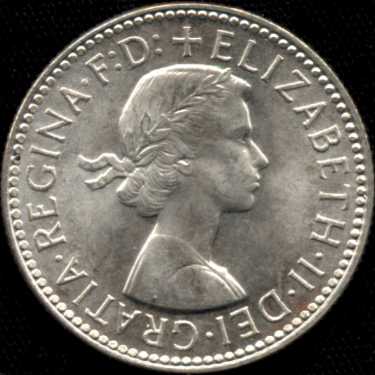
F:D was restored to the legend in 1955 and the number of rim beads was reduced to 101. This obverse was used for all shillings from 1955 onwards.
The early coins of the series were all minted in London but some of the 1915 issue was sub-contracted to Heaton & Sons of Birmingham. The Birmingham coins can be identified by the mintmark H under the date on the reverse. From 1916 onwards most shillings were struck at the Melbourne mint. The exceptions were:
All the shillings dated 1921 were struck in Sydney.
These coins have a star above the date but it is not a mintmark. The star was intended to signify a change in silver content but that was something which didn't happen. (The Melbourne mint struck 1,122,000 shillings in 1921 but they were all dated 1920.)
In 1924, 1925 and 1926 the Sydney mint struck a substantial number of shillings. There is no way to distinguish the coins from those struck at Melbourne.
Large numbers of shillings for the years 1942, 1943 and 1944 were struck at the San Francisco mint. These shillings carry an 'S' mintmark above the date.
In 1946 the Perth mint struck some shillings. These can be identified by a dot before the word SHILLING. This was the only silver coin struck at Perth.
The 1938 shilling has a dot over the date but the dot is part of the design and is not a mint mark. 1925 shillings typically show what appears to be the vestiges of a 3 projecting from the 5, suggesting that these coins are overdates.
Other Australian coins
Elizabeth II coins (1952-2022)

